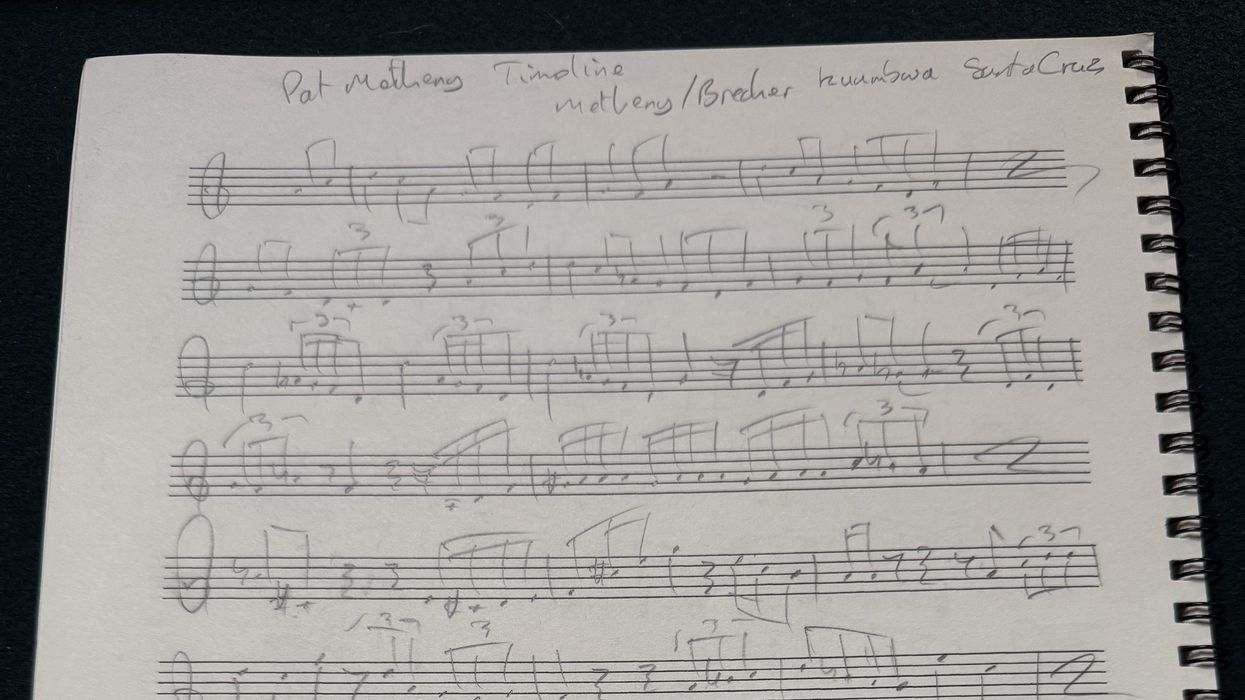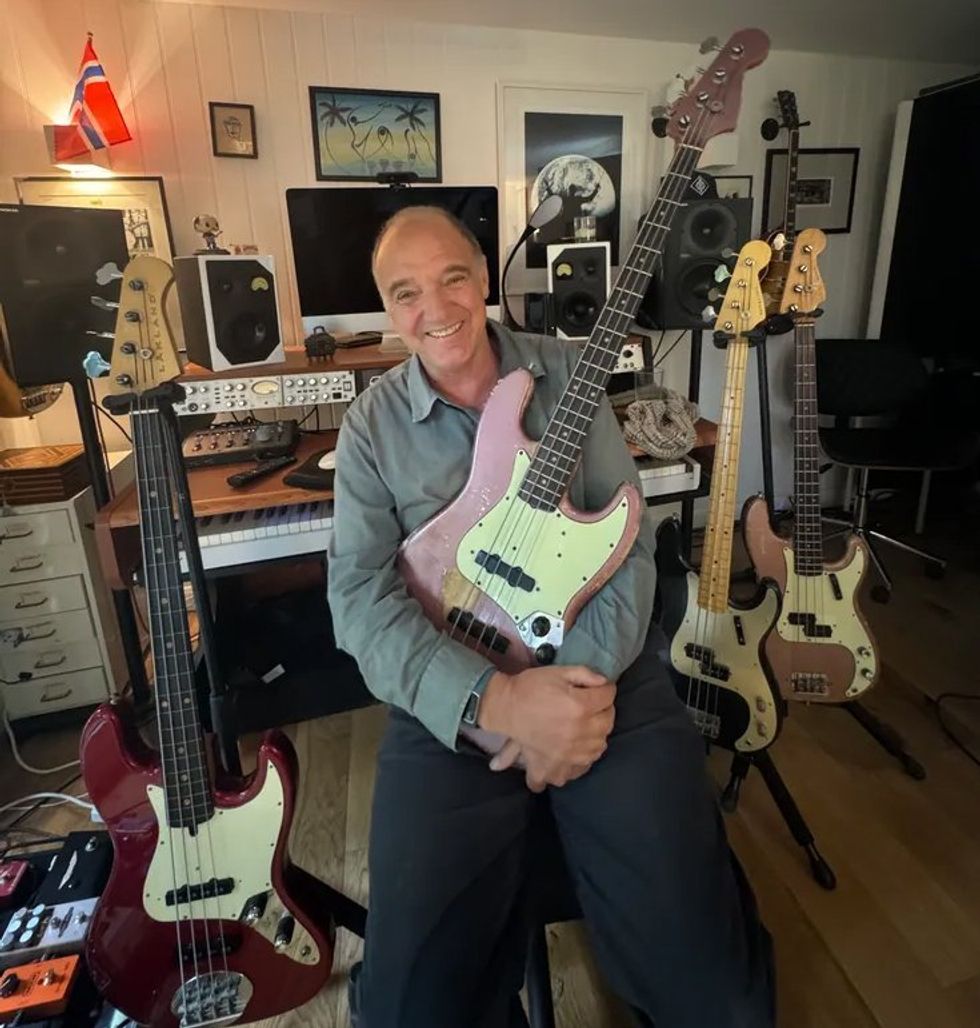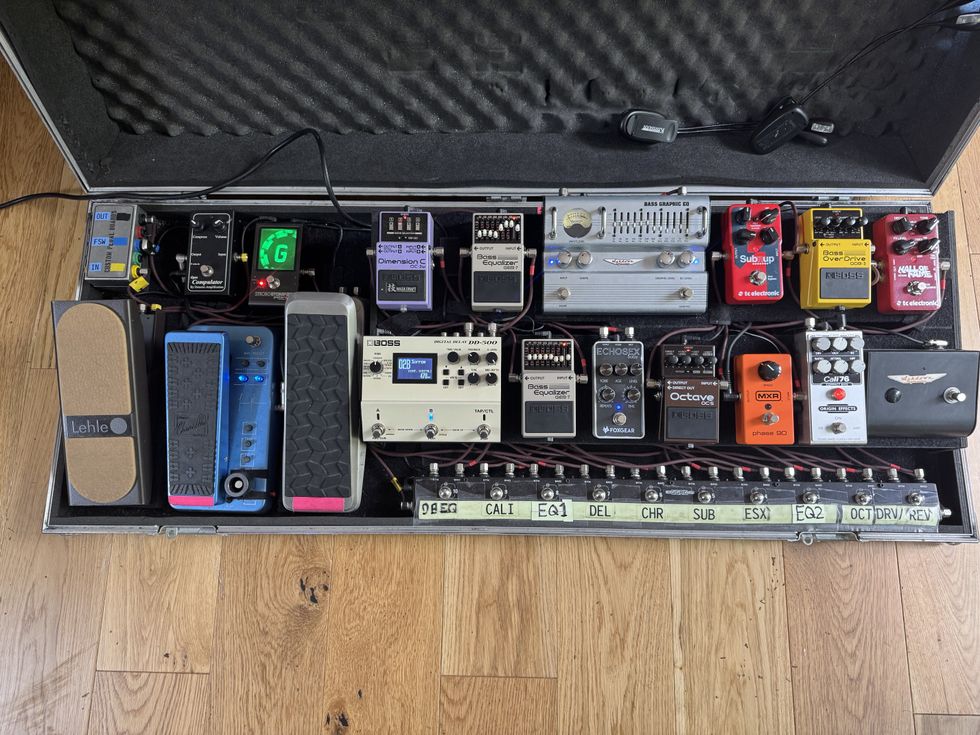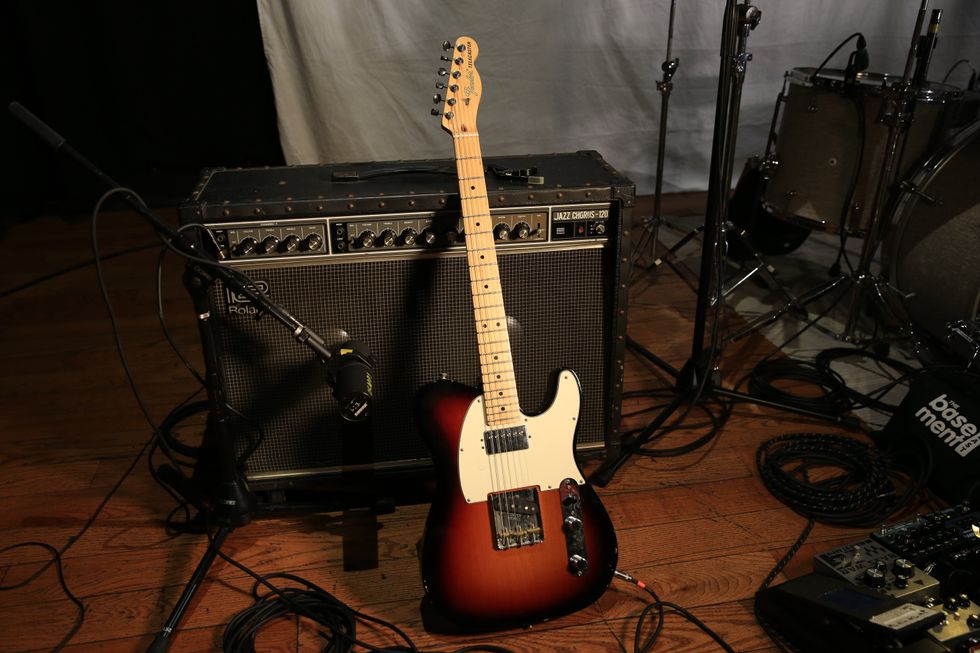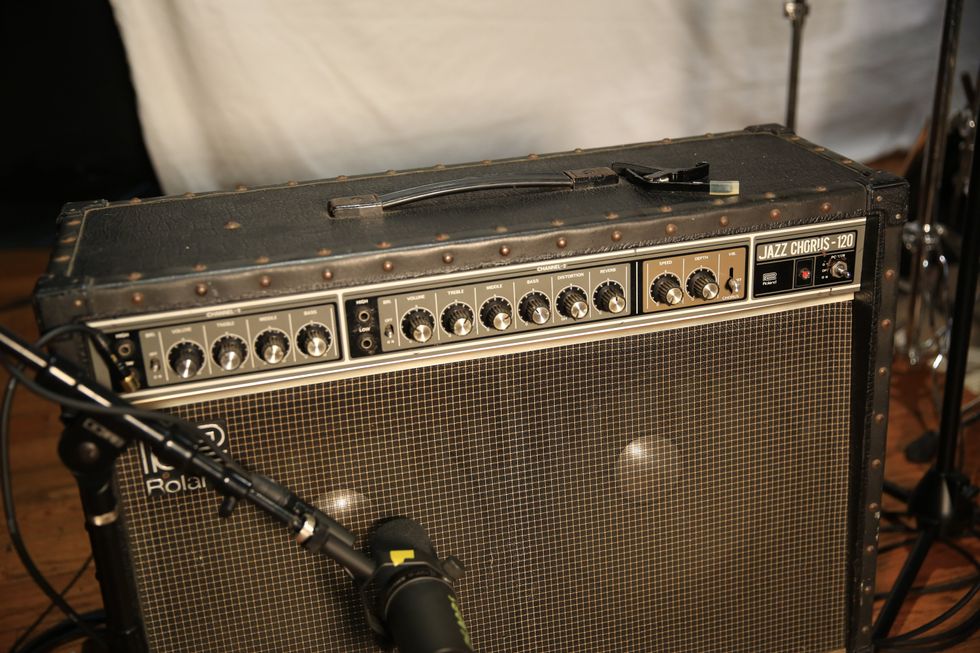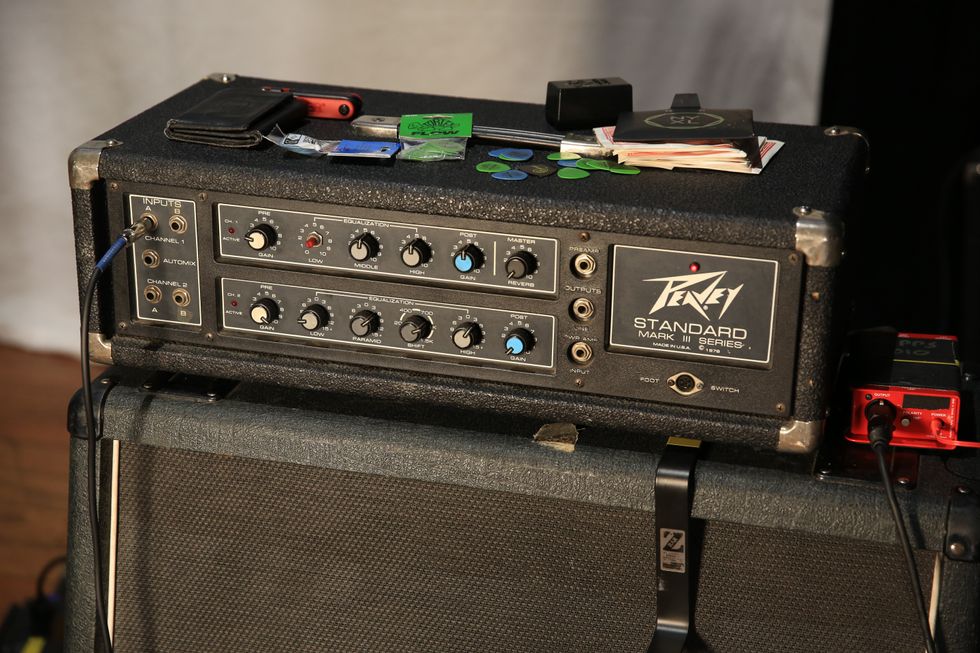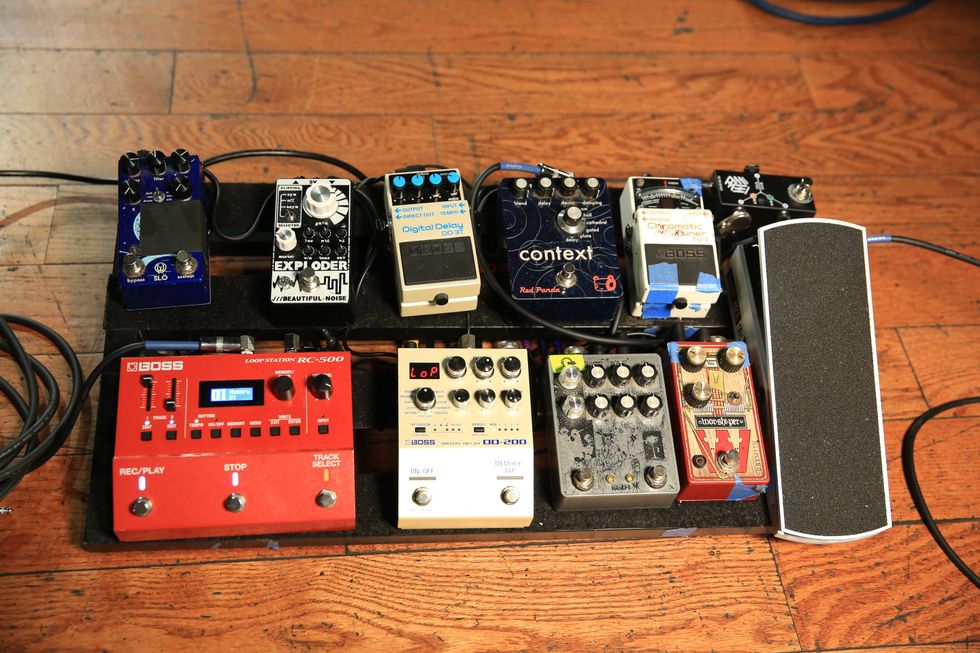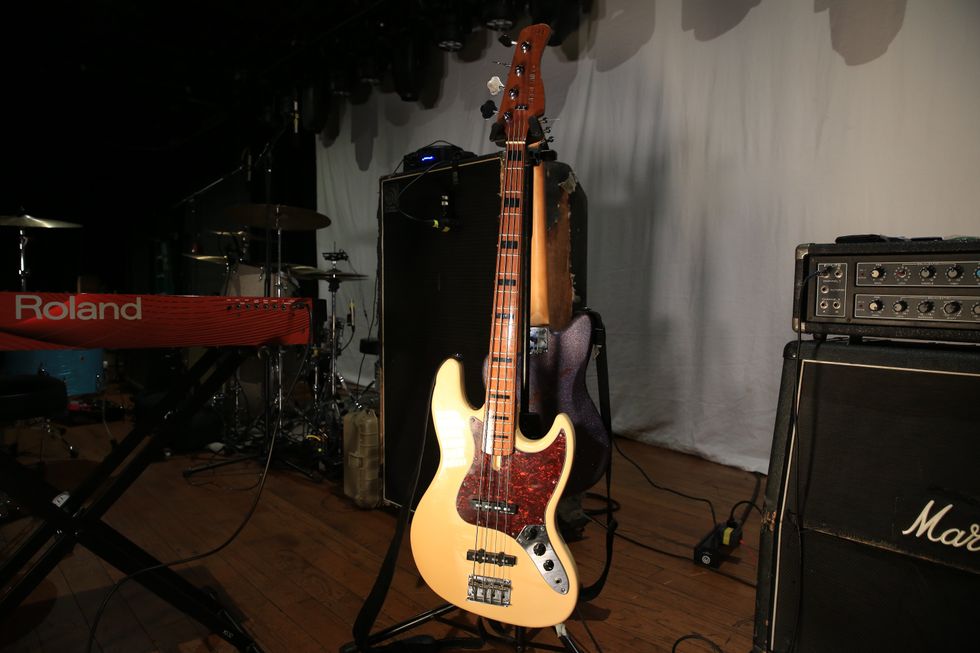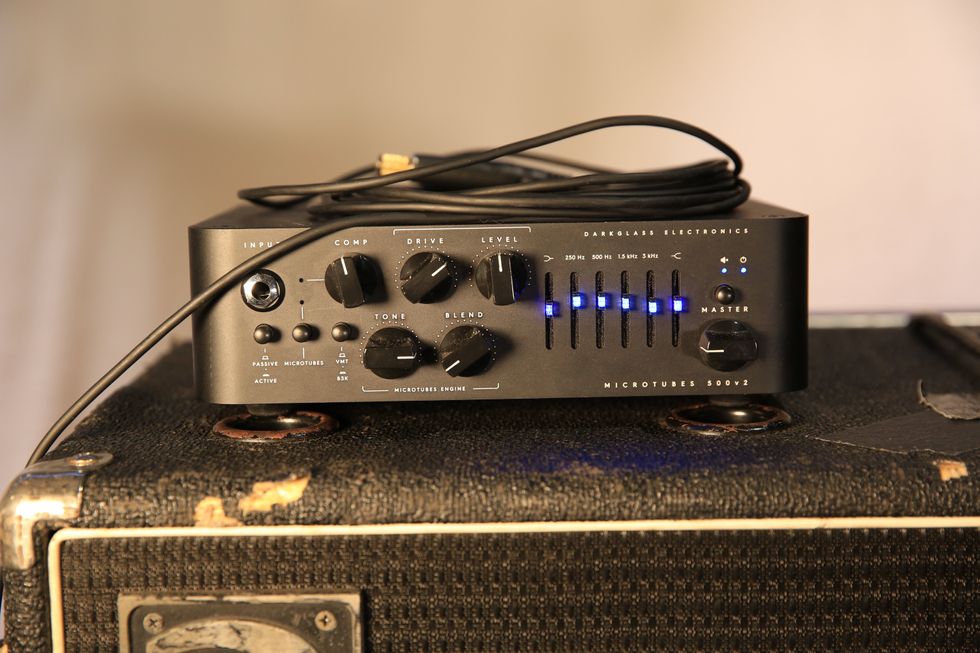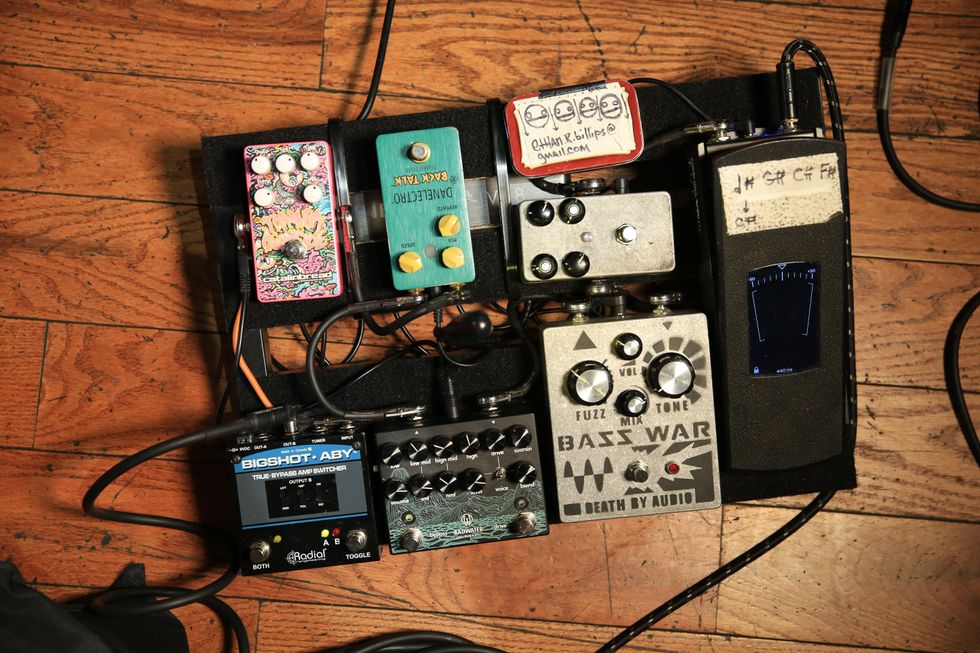I usually write about the restoration of higher end vintage instruments, but sometimes the lower end can produce some high-value examples, such as this 1962 Harmony H22 bass. Here’s how we freshened things up, getting it ready for stage and studio.
As a stringed instrument repairer and builder, I’ve always enjoyed building high-end bass guitars that are juiced up on steroids, and yet as a musician, I have found instruments over a broad range of price and quality to have value in certain musical settings. When striking the E string on this bass, you might think that it has the most undesirable tone possible, but in fact, it gives you a gut-like string bass sound. It’s a cool tone that takes me back to many vintage recordings, like the song “Last Kiss” by J. Frank Wilson and the Cavaliers.
This 1962 US-made Harmony has a Blue Book value of $525 in 98 percent mint condition. The Blue Book is correct as far as the market goes, but as a bass to have in your arsenal of tones, I’m surprised that it hasn’t become far more valuable. Even Steve Winwood’s bassist used one of these in the mid-sixties. The Harmony H22 reissue has an MSRP of $999, and is now made in Asia.
Classic Features Single cutaway semi-hollowbody; sunburst finish with celluloid binding and white “bat wing” pickguard; one DeArmond Gold Tone pickup; 30” scale bolt-on neck; 20-fret ebonized maple dot inlay fingerboard; two-per-side Waverly tuners; adjustable rosewood bridge; rosewood tailpiece; coil tap push-pull selector and white cupcake knobs. Serial Number: F62M (F for Fall, 62 for 1962, M indicates work shift number).
Freshening Up When I first took the bass out, I could see that it was missing the white push-pull knob for the coil tap switch. I emailed Harmony to see if they had new old stock (NOS) replacement parts, and also checked eBay and found the part for sale. Because of their chemical make-up, these knobs stay whiter than the “cupcake” knobs used for volume and tone.
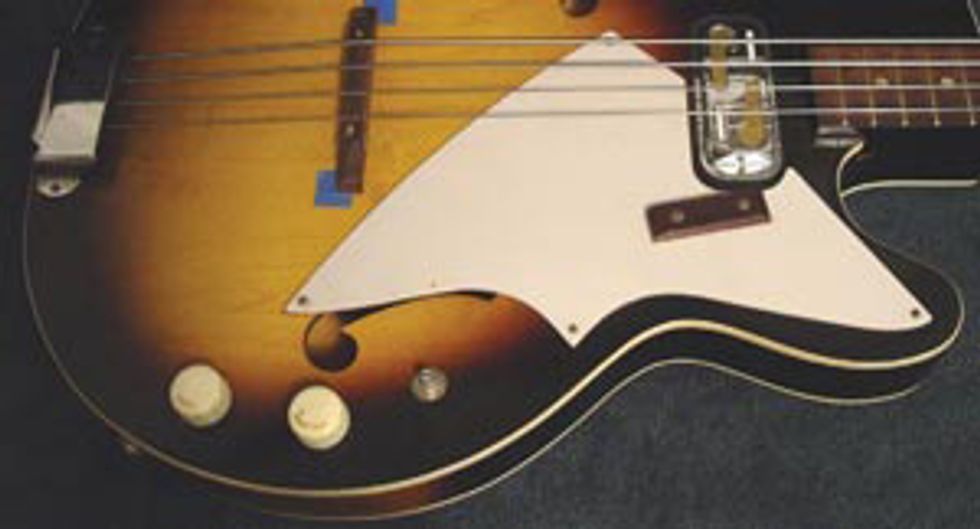 |
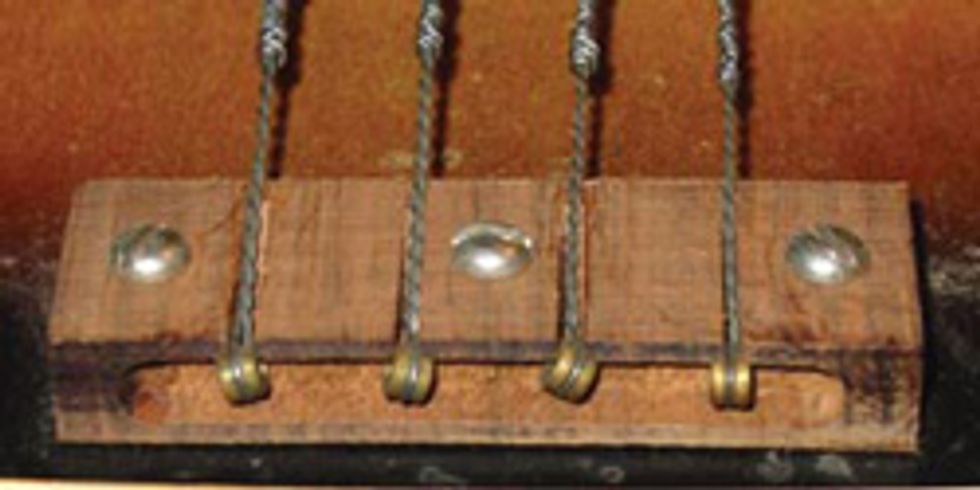 |
 |
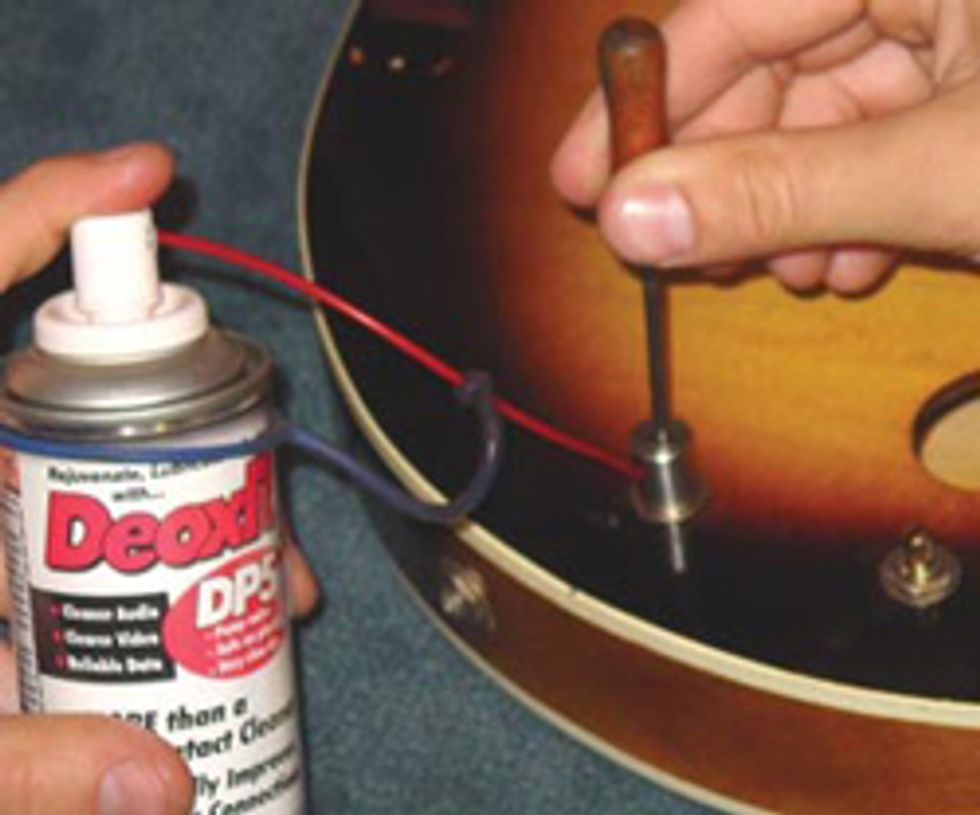 |
Stewart MacDonald’s Preservation Polish (item #3006) is my favorite when trying to remove years of body grime, oils and silicones. The polish does not leave the finish looking hazy like many other polishes do. It really gets in there and properly cleans.
A friend of mine recently turned me on to microfiber polishing cloth. It’s very popular in the automotive finishing business. This cloth polishes as it cleans, streak free and lint free. It holds the dirt and yet doesn’t absorb the polish deep into the cloth, so we don’t use as much polish as with highly absorbent polishing cloths. Even better, when the microfiber cloth gets dirty, you just put it in your washing machine. Once cleaned, it performs just as well as it did new—maybe better.
BGF Guitar Elixer (brownsguitarfactory.com) wood restorer is applied to the fingerboard, bridge, and tailpiece. I had my assistant Carson Lulic apply the Elixer to the bridge and tailpiece with a Q-tip. The wood was looking very dry and pale, but after conditioning is soft and lustrous.
Dirty sounding pots and electronics are detected through plugging into an amp. I clean pots using DeoxIt (StewMac #5027) with the CTS Pot Cleaning Cap (StewMac #0291). The Pot Cleaning Cap is a quick solution for cleaning noisy hard-to-reach control pots without extracting them from a guitar or amp.
Even though it is a 30” short-scale neck, the distance between the tuners and the tailpiece requires long-scale strings, and I chose some nice nickel flatwounds. We’re ready to bring back that ‘60s tone!
John Brown
John Brown, of Brown's Guitar Factory, is the inventor of the Fretted/Less bass. He owns and operates a full guitar manufacturing and repair/restoration facility, which is staffed by a team of talented luthiers. He is also the designer of guitar making/repair tools and accessories that are used today by instrument builders throughout the world.
brownsguitarfactory.com
info@brownsguitarfactory.com






![Rig Rundown: AFI [2025]](https://www.premierguitar.com/media-library/youtube.jpg?id=62064741&width=1245&height=700&quality=70&coordinates=0%2C0%2C0%2C0)












 Shop Scott's Rig
Shop Scott's Rig





